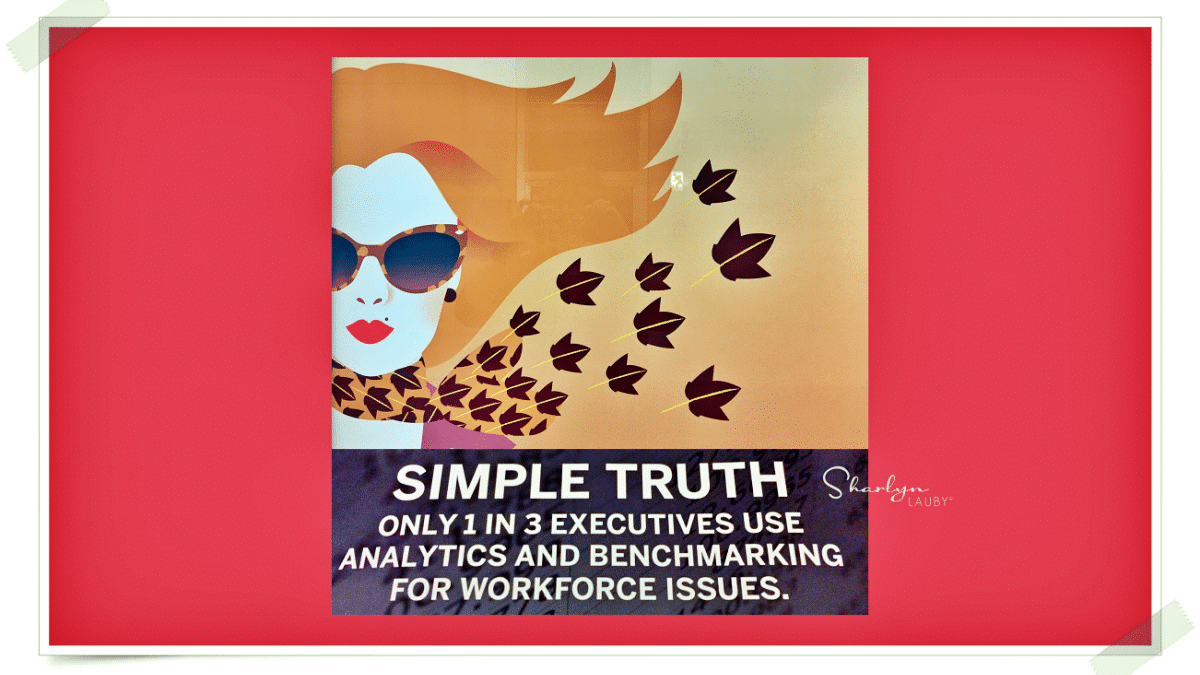When Employer Brand Becomes a Leadership Advantage
In boardrooms today, leaders are judged on more than numbers. Investors, employees, and the public are watching who you are, how you lead, and whether your culture matches your story. That is why employer brand is no longer a downstream HR concern. It is a leadership advantage. When leaders embody it, they build credibility, accelerate change, and strengthen reputation in ways no campaign alone can.
Why It Matters Now
The pressure on leaders has never been greater. Beyond delivering results, they must show that their values and actions line up. A strong employer brand sends signals that matter:
- Inside the organization it shows employees that leadership is dependable, values-driven, and aligned with the experience they live every day.
- Outside the organization it reflects cultural confidence and reputational strength with customers, investors, and media.
Yet one group often gets overlooked: the middle leadership layer. Employer brand work usually focuses on external talent, senior executives, and employee stories, but it rarely equips managers and directors — the people who employees interact with every day. If they cannot articulate the brand or do not feel proud of it, they cannot reinforce it. And if they do not feel a sense of belonging in it, they are more likely to disengage.
When employer brand becomes part of how all leaders lead, it strengthens both internal alignment and external valuation.
Employer Brand as Leadership Credibility
Leadership credibility is no longer measured only by foresight or operational skill. It is measured by whether words and behaviors align. Employees are quick to see if executive messaging is backed by real action, consistent cultural practices, and visible investment in people.
Why Values and Behaviors Are Not Enough
Many executive teams believe they have this work covered. They point to their purpose statement, their published values, and their leadership behaviors as evidence that the culture is defined. These are important foundations, but they are not the same as an employer brand that motivates and rallies people.
Why? Because purpose, values, and leadership behaviors are usually written at the organizational level. They describe what the company stands for, but they rarely speak to the personal motivators of the leaders and employees who bring that company to life.
At best, they act as smart psychology — a corporate version of what people want to hear. At worst, they feel one-sided: an articulation of what the company expects from its leaders and employees, without clarity on what leaders and employees gain in return.
Employer brand fills that gap. It makes the promise reciprocal. It answers not only “Here is who we are” but also “Here is why it matters for you to stay, to give your best, and to feel proud to lead here.” It takes what is often abstract and turns it into a lived drumbeat that inspires action.
The Missing Middle: Leaders as Carriers of the Brand
Too often, employer brand strategies are designed from the top and tested with employees and job seekers, but they miss the layer in the middle; the managers, directors, and regional leaders who make up the backbone of the organization.
These leaders are often the least engaged, the least familiar with the EVP, and the most in need of a reason to stay and give their best. Yet they are the ones employees look to every day for signals of culture, belonging, and direction.
If they cannot articulate what the employer brand stands for, they cannot reinforce it. And if they do not feel personally connected to it, they cannot inspire others.
Employer brand at its best is not a tagline for candidates. It is a drumbeat for leaders. A call to pride and purpose that says: “This is why it matters to be on this mission together.” It should give leaders a sense of reciprocity, not just what is asked of them, but what they gain in belonging to this community of leaders and what they can stand tall in communicating to their teams.
When leaders feel this resonance, the brand reverberates more powerfully than any external campaign. It becomes a lived message that employees experience daily, and that consistency is what builds trust inside and credibility outside.
Storytelling as Infrastructure for Change
Employer brand storytelling should not be designed exclusively for recruitment marketing headlines. It is infrastructure for change. Leaders who translate strategy into real stories create the coherence needed in times of transformation.
Think of a healthcare CEO not only spotlighting a frontline nurse’s story, but showing how the EVP guided the team to rally around that nurse during a personal challenge therefore making support and compassion more than words on a wall.
Or a retail executive sharing a candid video on sustainability, framed not as a marketing initiative but as the outcome of employees challenging leadership to invest differently. The EVP becomes the compass that explains why the company moved forward with courage and accountability.
Or a tech founder convening teams to reflect on innovation , not just to celebrate new ideas, but to underline how the EVP’s promise to empower creativity shaped the decision to greenlight bold experiments that carried risk.
This is the power of using the EVP to shape culture. These aren’t recruitment messages. They are the most memorable and resonant foundations of cultural movement. When people consistently see themselves reflected in those stories, momentum builds. The rally begins.
And this is just as true for the middle layer of managers and directors. When armed with the stories, the context, and the “why it matters,” they stop feeling like messengers and start acting as leaders who embody the mission. Storytelling, in this sense, is not only top-down but cross-organizational. It becomes a network of leaders reinforcing belonging.
Scaling Trust with AI-Enabled Messaging
As organizations grow more complex, leaders face the challenge of staying personal at scale. AI, used well, can help. It allows leaders to tailor messages for different groups; finance teams, frontline service teams, investors, while keeping the human tone intact.
Instead of one-size-fits-all updates, leaders can say: “Finance leaders, here is why this quarter matters to you.” Or “Customer support team, your insight shaped this update.”
This level of personalization makes employees feel seen and reinforces that leadership is listening. For middle leaders, it is also a powerful tool: giving them messaging that is relevant to their function, equipping them with language that reinforces the EVP, and showing them how their own role contributes to reputation and performance.
The Outcomes: Reputation and Share of Voice
When leadership lives the employer brand at every level:
- Employees share authentic stories that expand reach and credibility.
- Media and analysts notice culture-driven leadership and respond with stronger coverage.
- Investors interpret cultural health as a signal of resilience and stability.
- Middle leaders feel engaged and proud, which increases retention and strengthens performance at the team level.
- The result is stronger reputation, higher trust, and competitive advantage that comes from both the top and the middle.
A Framework for Leaders
Organizations that want to embed employer brand as a leadership advantage can:
- Diagnose organizational health through sentiment and cultural alignment.
- Anchor authenticity in leadership by ensuring executives and middle leaders embody stated values.
- Create storytelling infrastructure that includes town halls, curated stories, and tools for leaders to repeat and reinforce.
- Use AI to scale personally, tailoring communications without losing sincerity.
- Demonstrate the return by showing leaders how reinforcing the brand strengthens their influence, improves team outcomes, and supports career growth.
- Measure impact on reputation, engagement, and trust to guide refinements.
A Leadership Imperative
Employer brand is no longer a recruitment marketing campaign to sponsor. It is a leadership discipline to embody. Leaders who align their voice and actions with the brand not only earn credibility but also accelerate transformation and strengthen reputation.
In a time when expectations are rising and scrutiny is intense, the leaders who stand apart will be those who are clear about where they are going and credible in how they bring others with them. Employer brand should feel less like a tagline and more like a drumbeat. When leaders at every level rally around it, the message reverberates with pride, belonging, and purpose.
Elevate Your Leadership Impact Through Employer Brand
Let’s explore how your leadership voice can become your greatest strategic advantage.
About Blu Ivy Group
Blu Ivy Group is a leading employer brand and culture consultancy, operating in both Canada and the United States and serving organizations worldwide. For more than a decade, we have partnered with boards, private equity firms, and executive teams at some of the world’s most recognized and respected brands.
Our expertise spans culture narrative development, culture transformation, leadership impact, leadership communications, employer brand strategy, employer branding, and internal communications. What sets us apart is our ability to blend data-driven insight with storytelling that inspires action. We design strategies that help leaders strengthen credibility, align culture with purpose, and accelerate performance across every stage of growth.
From global enterprises to high-growth portfolio companies, Blu Ivy helps organizations build reputations that attract top talent, create belonging, and deliver measurable impact to stakeholders.
Contact Us
If you are ready to strengthen your culture, elevate leadership impact, and bring your employer brand strategy to life, we would love to connect.
Contact Stacy Parker at sparker@bluivygroup.com
Learn more at www.bluivygroup.com






















